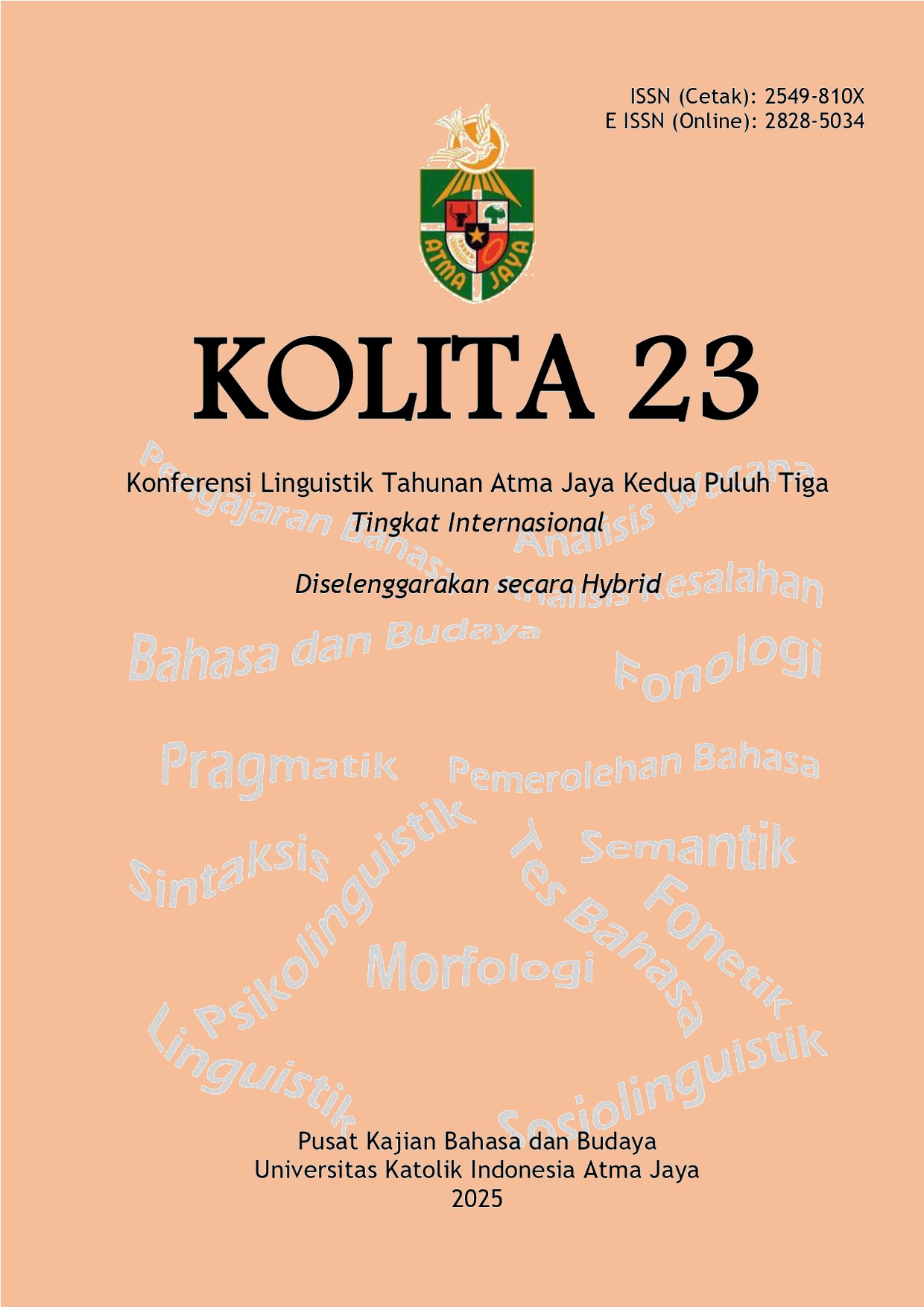A COMPARATIVE ANALYSIS OF POETRY TRANSLATION USING THREE AI TOOLS
DOI:
https://doi.org/10.25170/kolita.v23i23.7147Kata Kunci:
poetry, AI translators, structure, diction, hujan bulan juniAbstrak
AI tools today enable faster and easier translation. However, because some AI technologies are not designed specifically for translation tasks, especially literary translation, such as poetry translation, they may not always provide appropriate translations. AI systems may not translate well if they are not properly prompted. This study analyses the translation of Indonesian poetry 'Hujan bulan Juni' by a renowned Indonesian poet, namely Sapardi Djoko Damono, into English by three AI tools: QuillBot, Google Translate, and Chat GPT. The purpose of this study is to find out the translation differences in terms of structure and diction and to discover which AI tools offer the best translation that can keep the aesthetics of the poetry in the target language. The data is the poetry titled ’Hujan Bulan Juni’ which is downloaded from the internet. This poem consists of twelve lines, forming six complete sentences. The poetry is then submitted to the three AI tools to be translated into English. The three translations were then compared in terms of the word choice and the structures used in the target text translations. The title 'Hujan bulan Juni' is translated as 'June Rain' by QuillBot, ‘the rain of June' by Google Translate, and 'the rain in June' by ChatGPT. These samples show that each tool has a certain preference and technique when structuring the translations even though the meaning might be similar. Results show that in terms of translating poetry, QuillBot gives the most natural translation, followed by ChatGPT and finally Google Translate, particularly in the choice of words and structure. For instance, QuillBot translates rintik rindu’ into ‘drops of longing,’ while GT and ChatGPT render it just as ‘longing.’ QuillBot maintains its faithfulness to the source text, making it more natural in the target text. However, the AI translators cannot fully create an aesthetic translation of poetry, as the target language translation still feels like a word-for-word translation. GT, for example, translates ‘arif’ and ‘bijak’ as ‘wise’, which does not convey the subtle difference of the source texts. The findings of this study imply that AI can be a valuable tool in improving productivity in translating poetry or other kinds of literary works. The findings also suggest that AI-generated machine translations offer significant potential for literary translation, yet human touch is still needed to create more aesthetic target language translation. Therefore, a hybrid approach that combines AI efficiency and human expertise is still needed in practicing, studying or teaching






